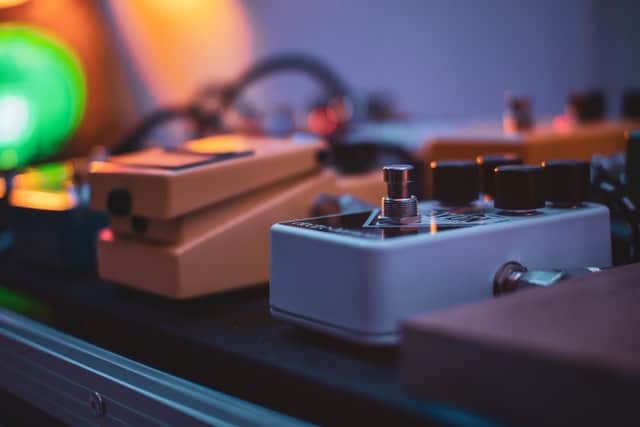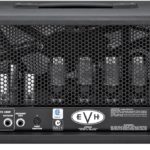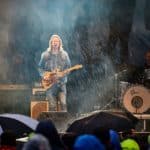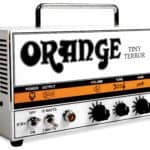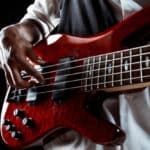When playing electric guitar, the sound of it plugged directly into an amp can be nice.
Much of the time, the sound will be clean and extremely dry which can be ideal in a lot of contexts.
But sometimes, the song you’re playing will require a bit more, shall we say, spice.
Effects for short.
This can be chorus, distortion, reverb, delay, etc. There are a couple of different ways to go about adding these effects.
The two ways I’m referring are a series effects loop and a parallel effects loop.
They are two different ways to add effects to your guitar signal.
In short:
A series effects loop lets you hook up effects after your signal has passed through the preamp stage of your amp. A parallel effects loop allows for the same but also lets you decide on the amount of signal you want to send through. You could choose to send all of it or just a small percentage.
In this article, I’ll discuss the differences, the pros, and the cons of each of them, as well as which effects chain might work best for you.
How does an effects loop work on a guitar amp?
An effects loop is when you send your guitar through your preamp, then through your effects, and out your power amp.
The most common effects to add after the preamp would be time-based effects, i.e. delay and reverb.
This is often preferred because the preamp colors the tone quite a bit and it’s ideal to add effects such as reverb/delay after the preamp tone and not before it.
Effects loops started becoming a thing in the 1970s. Prior to that, in the 1950s and 1960s, amps were a lot simpler.
There weren’t external effects, just the built-in tremolo, and reverb. Once other types of effects were invented, such as delay and wah-wah, they were placed between the guitar and the amp.
This worked fine because amps were only clean at first.
Eventually, amps started being built with an overdrive knob/channel, and putting the effects before the distortion caused the sound to be, quite frankly, horrible.
Thus the effects loop was created to counter this.
What is a series effects loop?
A series (you might see it also referred to as “serial”) effects loop is when you run your guitar straight through your effects in a single path.
Think of it as having your signal be 100% wet, although individual effects processors often have a built-in wet/dry knob, in the context of an effects loop, your signal is 100% wet.
A series loop is used much of the time because of its convenience.
It involves less blending than a parallel loop and with modern effects processors, the signal is generally pretty crisp. Another reason you see it more often is because it’s the only option available on older amplifiers.
Plus, a lot of guitarists have been grandfathered into preferring this method even if they eventually upgrade to a newer amp with a parallel effects loop.
Some people also just prefer the sound of all the effects running together at 100% wet because it’s what their ears are used to hearing.
What is a parallel effects loop?
A parallel effects loop is when you blend the processed signal with the dry signal. Many modern amps have the ability to blend the dry and the wet signal.
Since this is a fairly new way to route your effects and processors (in the grand scheme of things), it’s a bit less common to see than the series effects loop.
That’s not to say that it won’t eventually become more commonly used but there’s also the convenience factor.
It’s less likely that you’ll see guitarists route their effects this way because it’s a little more hassle for, what some see as, a slightly more improved tone.
What are the main differences between a series and a parallel effects loop?
The main difference between the two effects loops is tone flexibility.
The parallel loop is more flexible than the series loop when it comes to tone. By being able to blend the two signals, you can shape it a bit more and can oftentimes get more clarity.
Keep in mind, even though the parallel loop can give you more flexibility, most modern effects are going to sound very clear and will most likely give you the tone you desire without needing to “roll it back”, so a series loop will be sufficient for most players.
One of the biggest differences between the two loop methods is potential phasing issues.
A series loop won’t likely give you any phasing issues, unless you’re using a phaser, of course. When using a parallel effects loop, it can, at times, sound like you have a phaser/flanger/chorus on even if you don’t have any of those effects in your chain.
This is because the mixing of the dry and wet signals, if they’re too close in tone, will sound like two guitars playing simultaneously but will be ever-so-sightly different tone-wise and it creates that chorus sound.
How to know if an amp has a series or parallel effects loop?
Many amps don’t label which effects loop they have but the main giveaway is a mix control knob. If your amp has a parallel effects loop, you’ll notice a mix control knob next to the return and send inputs.
If you notice no such knob, then your amp most likely has a series effects loop.
It’s also entirely possible that you’re amp doesn’t have any effects loops, in which case, your only option is to put the effects between your guitar input and your amp input.
Which kind of effects loop would be better for you?
Let me start by saying there are no right or wrong methods here.
No rules.
Plenty of guitar players have broken many of these so-called rules and have carved out their own unique sound.
Having said that, there are some general guidelines that guitarists often follow to help them achieve tones that sound good.
While you can use any effect in a parallel effects loop, the two that are used most frequently are delay and reverb because those are often best blended into the dry signal and usually pretty lightly.
They are also the two effects where there’s a minimal chance that there will be phasing issues, though that is always something to look out for.
One reason you would use a parallel loop would be if you have older stompboxes that don’t sound amazing (I’ve heard the term “tone suck” thrown around).
By using a parallel loop, you can blend the dry signal with the wet tone of the old stompbox to get the most out of the effect.
Final Thoughts
When it comes to buying an amp, don’t let this one feature bog you down.
There’s a lot to consider when buying an amp and unless you’re planning on running a multitude of effects, a series effects loop should be perfectly sufficient for most guitar players.

Hello there, my name is Ramiro and I’ve been playing guitar for almost 20 years. I’m obsessed with everything gear-related and I thought it might be worth sharing it. From guitars, pedals, amps, and synths to studio gear and production tips, I hope you find what I post here useful, and I’ll try my best to keep it entertaining also.

